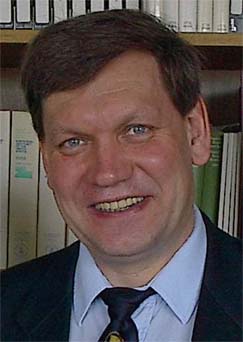Our best papers on aging, mortality and longevity
We are pleased to share with you our best (most cited) papers on aging, mortality and longevity studies. You can easily get the full text of each publication just by clicking on the titles below. Comments and suggestions are most welcome!
1.
Gavrilov L.A., Gavrilova N.S. The reliability theory of aging and longevity. Journal of Theoretical Biology, 2001, 213(4): 527-545.
Cited 211 times, Journal Impact Factor: 2.574
2.
Gavrilov, L.A., Gavrilova, N.S. Evolutionary theories of aging and longevity. TheScientificWorldJOURNAL, 2002, 2: 339-356.
Cited 74 times, Journal Impact Factor: 1.658
3.
Gavrilova, N.S., Semyonova, V.G., Evdokushkina G.N., Gavrilov, L.A. The response of violent mortality to economic crisis in Russia. Population Research and Policy Review, 2000, 19: 397-419.
Cited 68 times, Journal Impact Factor: 0.718
4.
Gavrilova, N.S., Gavrilov, L.A., Evdokushkina G.N., Semyonova, V.G., Gavrilova, A.L., Evdokushkina, N.N., Kushnareva, Yu.E., Kroutko, V.N., Andreyev, A.Yu. Evolution, mutations and human longevity. Human Biology, 1998, 70(4): 799-804.
Cited 51 times, Journal Impact Factor: 0.531
5.
Gavrilov, L.A., Gavrilova, N.S. Season of birth and human longevity. Journal of Anti-Aging Medicine (now Rejuvenation Research), 1999, 2(4): 365-366.
Cited 50 times, Journal Impact Factor: 4.138
6.
Gavrilov, L.A., Gavrilova, N.S. Parental age at conception and offspring longevity. Reviews in Clinical Gerontology, 1997, 7: 5-12.
Cited 42 times
7.
Gavrilov L.A., Gavrilova, N.S., Kroutko, V.N., Evdokushkina, G.N., Semyonova, V.G., Gavrilova, A.L., Lapshin, E.V., Evdokushkina N.N., Kushnareva, Yu.E. Mutation load and human longevity. Mutation Research, 1997, 377(1): 61-62.
Cited 39 times, Journal Impact Factor: 3.556
8.
Gavrilov, L.A., Gavrilova, N.S. Biodemographic study of familial determinants of human longevity. Population, 2001, 13(1): 197-222.
Cited 29 times, Journal Impact Factor: 0.542
9.
De Grey, Aubrey D. N., Leonid Gavrilov, S. Jay Olshansky, L. Stephen Coles, Richard G. Cutler, Michael Fossel, and S. Mitchell Harman. Antiaging technology and pseudoscience. Letter. Science, 2002, 296: 656-656.
Cited 28 times, Journal Impact Factor: 29.747
10.
Carnes, B.A., Olshansky, S.J., Gavrilov, L.A., Gavrilova, N.S., Grahn, D. Human longevity: Nature vs. Nurture - fact or fiction. Perspectives in Biology and Medicine, 1999, 42(3): 422-441.
Cited 25 times, Journal Impact Factor: 1.084
11.
Gavrilov, L.A., Gavrilova, N.S. Is there a reproductive cost for human longevity? Journal of Anti-Aging Medicine (now Rejuvenation Research), 1999, 2(2): 121-123.
Cited 24 times, Journal Impact Factor: 4.138
12.
Gavrilov, L.A., Gavrilova, N.S. When Fatherhood Should Stop? Letter. Science, 1997, 277(5322): 17-18.
Cited 21 times, Journal Impact Factor: 29.747
Total number of citations for 10 top articles: 616
Book:
The biology of life span: a quantitative approach
LA Gavrilov, NS Gavrilova - 1991 - Harwood Academic Publishers
Cited 323 times
Book in Russian:
Биология продолжительности жизни
ЛА Гаврилов, НС Гаврилова - 1991
Cited 40 times
Source:
http://scholar.google.com/
Home:
Longevity Science Blog
and
Our best papers on aging, mortality and longevity
Shorter weblink:
http://tinyurl.com/best-papers
.
Labels: aging, best papers, Biology of Life Span, evolution, evolutionary theory, longevity, mortality, mutation load, mutations, parental age, reliability theory, reproductive cost, Season of birth


